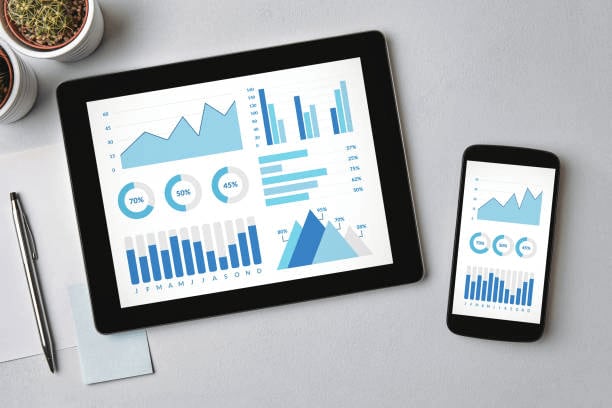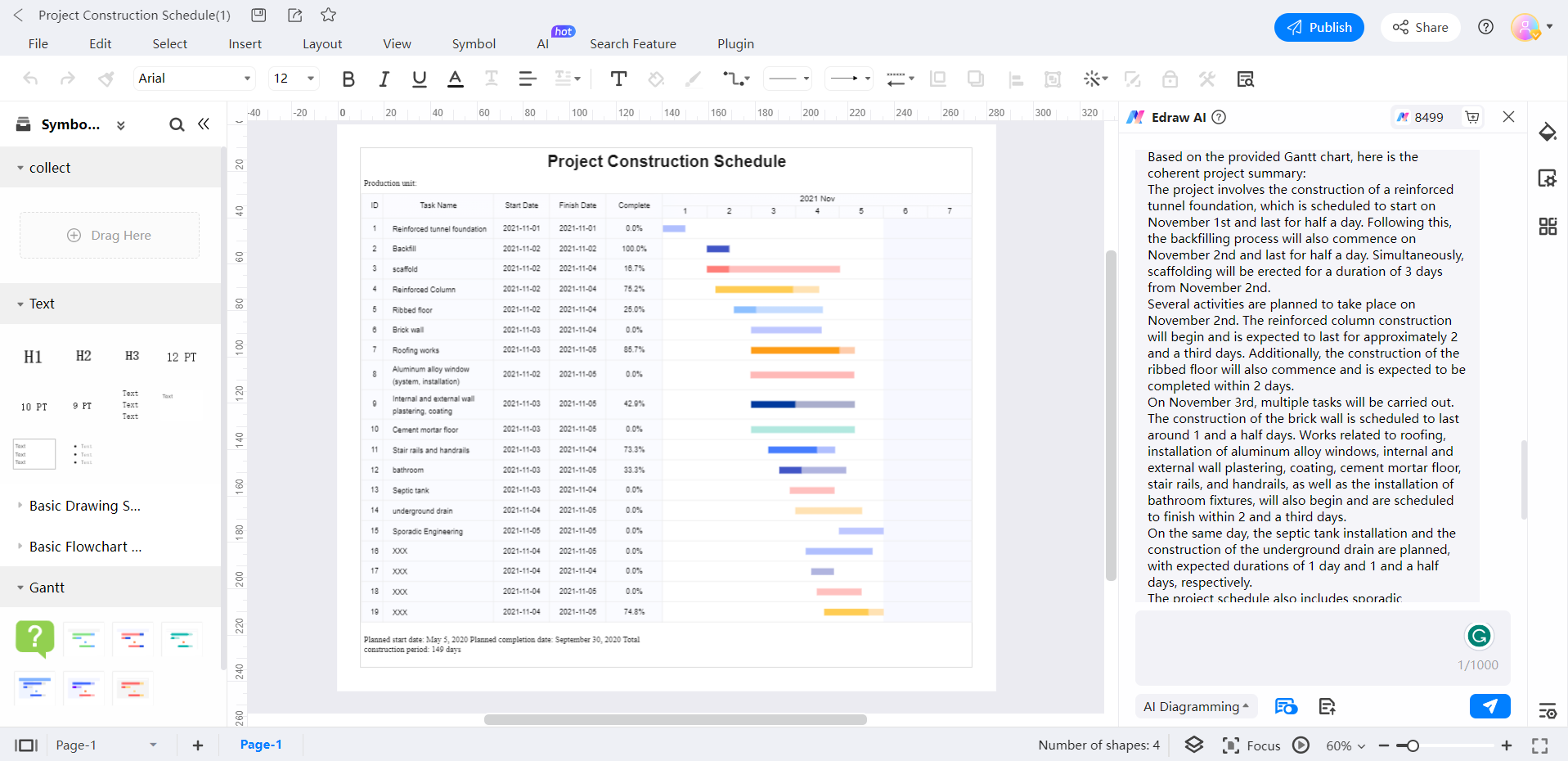In this article

A clear yet comprehensive project overview is important in effective project management. It provides a guiding path for the project, clarifies its objectives, establishes expectations among stakeholders, and ensures everyone is on the same page. However, creating a comprehensive project overview can be time-consuming, spanning hours or even days.
This article will explore the essential steps in creating a project overview and demonstrate how you can use AI-based tools to reduce those hours into minutes. These tools can extract complex visual and textual data from Gantt charts without a second and help you craft an impressive project overview document.
What is a Project Overview
A project overview is a concise document or presentation serving as a blueprint for any project. The main purpose of a project overview is to provide stakeholders, team members, and decision-makers with a clear and high-level understanding of what the project aims to achieve and how it will be executed.
Some important components of a project overview include the following:
- Purpose and Objectives: This section outlines the project's goals, the problem it intends to solve, or the opportunity it seeks to capitalize on. It explains why the project is necessary.
- Scope: It defines the project's boundaries, detailing what's included and excluded. This helps in managing expectations and preventing scope creep.
- Key Deliverables: Listing the major outcomes or products that the project will produce, enabling stakeholders to understand what to expect.
- Timeline: A high-level project timeline that describes when key milestones or phases will be completed.
- Budget: An estimate of the project's financial requirements, helping stakeholders understand the cost implications.
- Team and Roles: Identifying key team members and their roles, fostering accountability and clarity.
- Risk Assessment: Identifying potential risks and mitigation strategies, promoting proactive risk management.
- Stakeholder Communication: Outlining how and when stakeholders will be informed and engaged throughout the project.
How To Write an Effective Project Overview
A comprehensive project overview is an important step in the project planning process. It is a guiding document that aligns stakeholders, informs team members, and sets the project's direction.
To write a well-formulated project overview, follow the steps given below:
Step 1: Understand the Project
Before you start to write a project overview, you must deeply understand the project itself. Start by gathering all relevant project documentation, such as project charters, proposals, or initial briefs. Review these documents carefully to understand the project's purpose, scope, and constraints or limitations.
Next, schedule meetings or interviews with key stakeholders, including the project sponsor, clients, and team members. Engaging in open and transparent communication with stakeholders is important for clearly understanding the project's goals and expectations.
Ensure to ask questions about the project's background, intended outcomes, and any requirements or constraints that must be addressed.
Step 2: Define the Project's Purpose and Objectives
After you have understood the project clearly, the next step is to start preparing a project overview document. Begin with defining the purpose and objectives of your project, focusing on the "why" and "what" of the project. The purpose is the reason for undertaking the project, while objectives are specific, measurable goals you aim to achieve.
In your project overview, clearly state the purpose of your project. For example, if you are working on a software development project, the purpose might be to "create a user-friendly mobile app to improve customer engagement and sales."
Following the purpose, list the project's objectives. These objectives should be SMART (Specific, Measurable, Achievable, Relevant, and Time-bound). For instance, an objective could be "Increase app downloads by 30% within six months of launch."
Step 3: Identify Key Deliverables and Milestones
Break the project into manageable components and establish clear progress markers by identifying key deliverables and milestones. Key deliverables are the tangible results or products the project will produce, while milestones are significant points in the project timeline where you achieve specific, notable accomplishments.
For instance, if you're managing a construction project, the key deliverables might include the completed building structure, electrical and plumbing systems, and interior finishes. Milestones could be the completion of the foundation, framing, and final inspection.
Including these in your project overview helps stakeholders visualize the project's progression and understand what to expect at various stages.
Step 4: Describe the Project Team and Stakeholders
A successful project relies on a cohesive and well-coordinated team. In this section of your project overview, briefly describe the project team, including key roles and responsibilities. Highlight any specialized skills or qualifications that team members bring to the project.
Additionally, identify and describe the project's stakeholders. These individuals or groups are interested in or are affected by the project's outcomes. Stakeholders may include clients, investors, regulatory bodies, and end-users. Understand their roles, expectations, and the level of involvement they will have throughout the project.
Step 5: Outline the Project Timeline and Schedule
The project timeline and schedule are important components of the project overview, as they set expectations for when key activities and deliverables will be completed. Use project management tools or software to create a detailed project schedule, including start and end dates for each phase or milestone.
Break down the timeline into manageable segments, such as weeks or months, and allocate resources accordingly. This helps ensure the project stays on track within the defined time frame.
Add any dependencies between tasks, critical paths, and contingencies for potential delays. Sharing this information in the project overview presents transparency and helps stakeholders understand the project's timeline.
Using AI to Generate a Project Overview

Using AI to create a project overview can be an efficient way to simplify this complex process. Suppose you’re working with a Gantt chart and must extract data to add to your project overview document. Extracting the data manually will be a time-consuming and daunting task.
AI-based diagramming tools like EdrawMax can help you extract text and interpret Gantt charts through its machine-learning algorithms within seconds. It simplifies converting complex Gantt chart data into an understandable and informative project summary.
It would identify key elements such as task names, durations, dependencies, and deadlines from the chart. It can also compose a coherent project summary using its natural language generation (NLG) techniques. Visual elements like charts or graphs could also be integrated to enhance the overview.

For instance, in the above image, EdrawMax’s AI summarizes the construction project displayed in the Gantt chart. The summary is displayed on the right-hand side, listing all the details of the project type, the start date, how many days the complete project will last, and each task duration per day.
So, AI can make your complex tasks simpler; some general benefits of using AI to create a project overview include:
- Time Efficiency: You can quickly generate summaries and save valuable time.
- Accuracy: You can reduce the risk of human errors in manual summarization, ensuring that project details are presented correctly.
- Consistency: AI-generated project overviews maintain a consistent format and tone across various projects.
- Scalability: AI has incredible power to handle large volumes of data, making it suitable for complex projects with extensive Gantt charts.
- Insights: AI can highlight critical project components, helping identify potential issues or bottlenecks.
- Adaptability: You can easily customize AI-generated project overviews based on specific needs, such as creating executive summaries or detailed reports.
Conclusion
A project overview describes the purpose of your project, and a well-written project overview is extremely important to present the project goals and objectives. It helps stakeholders quickly grasp project goals, timelines, and resource allocation, aiding in effective decision-making and communication.
Creating an effective project overview can be daunting, but with AI tools like EdrawMax, you can create it within minutes. Its project overview feature automatically extracts and presents essential information from complex data charts. This saves time and ensures accuracy and consistency in project summaries, making it a valuable asset in the project management toolkit.
[没有发现file]



